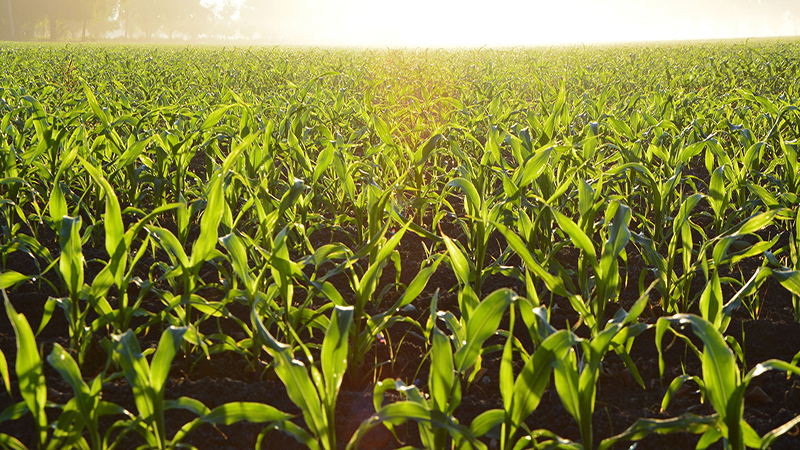Green-Up Marks Time To Apply Nitrogen In Winter Wheat
Spring nitrogen should be applied before the beginning of stem elongation to maximize yield potential, save money and guard the environment, said Ed Lentz, an associate professor who specializes in crop production and agronomy.
“This is the time to do it, but don’t worry if you can’t get on the field yet because you still have time,” he said. “In fact, you have maybe four to six weeks depending on the weather and how fast we warm up. The warmer it is the narrower the window, and the colder the spring the wider the window.”
Historically, wheat in southern Ohio reaches stem elongation in mid-April while northern Ohio wheat reaches stem elongation at the end of April. This year, the state’s wheat crop is likely to reach that stage earlier if the weather stays warmer.
Lentz said the general recommendation is to apply nitrogen one time between green-up and early stem elongation. That leaves anywhere from four to eight weeks, depending on the year, to apply nitrogen without having any yield decreases.
“We are experiencing unusually warm temperatures very early this year, considering the record high temperatures experienced around the region in the past week,” Lentz said. “Growers need to be aware that there is the potential for volatilization losses at these temperatures if the area doesn’t get rain soon enough after application of urea products.”
This is a concern, he said, considering that OSU Extension research has shown volatilization losses may contribute to a yield loss of 10 bushels per acre under these conditions.
“Normally at this time of year, we’re not worried about volatilization, since temperatures are low enough that losses are minimal,” Lentz said. “But the increased heat and drying conditions could cause conditions ripe for volatilization losses for urea and 28%, i.e., moist soil rapidly drying from warm winds with temperatures higher than 70.
“Nitrogen losses may be severe under these conditions if rain does not occur between 48 and 72 hours after application. If these conditions occur when applying urea, a urease inhibitor may be used, which should protect urea from volatilization losses for at least a week.”
Growers also could delay urea application until rain is expected. Rainfall needs to total at least a one-quarter inch – preferably one-half inch – to ensure urea is moved into the soil, Lentz said.
Most producers base their nitrogen rates on expected yield, and nitrogen rates should take in account the lower yield potential of fields with reduced stands and tiller numbers.
“Stands need to be evaluated for estimated yields compared to other years,” he said. “Many fields in northwest Ohio were planted late and did not get enough growth to expect high yields.”
Also, many fields have drowned-out areas, but increased nitrogen rates will not correct these problems, he said.
“Ohio State research has shown that yields are not affected by delayed nitrogen until after early stem elongation, which is generally the end of April,” Lentz said. “Studies over a five-year period have shown that yields were the same or slightly better when a single application occurred at Feekes 6, which is the first node visible of early stem elongation, compared to initial green-up.
“Yields dropped 10 to 15% when a single application was delayed to early boot stage. At this time, we would recommend producers to apply nitrogen as soon as field conditions allow application equipment.”






